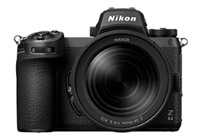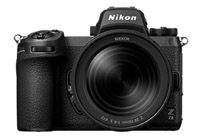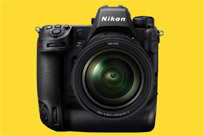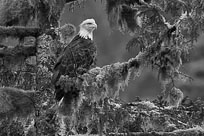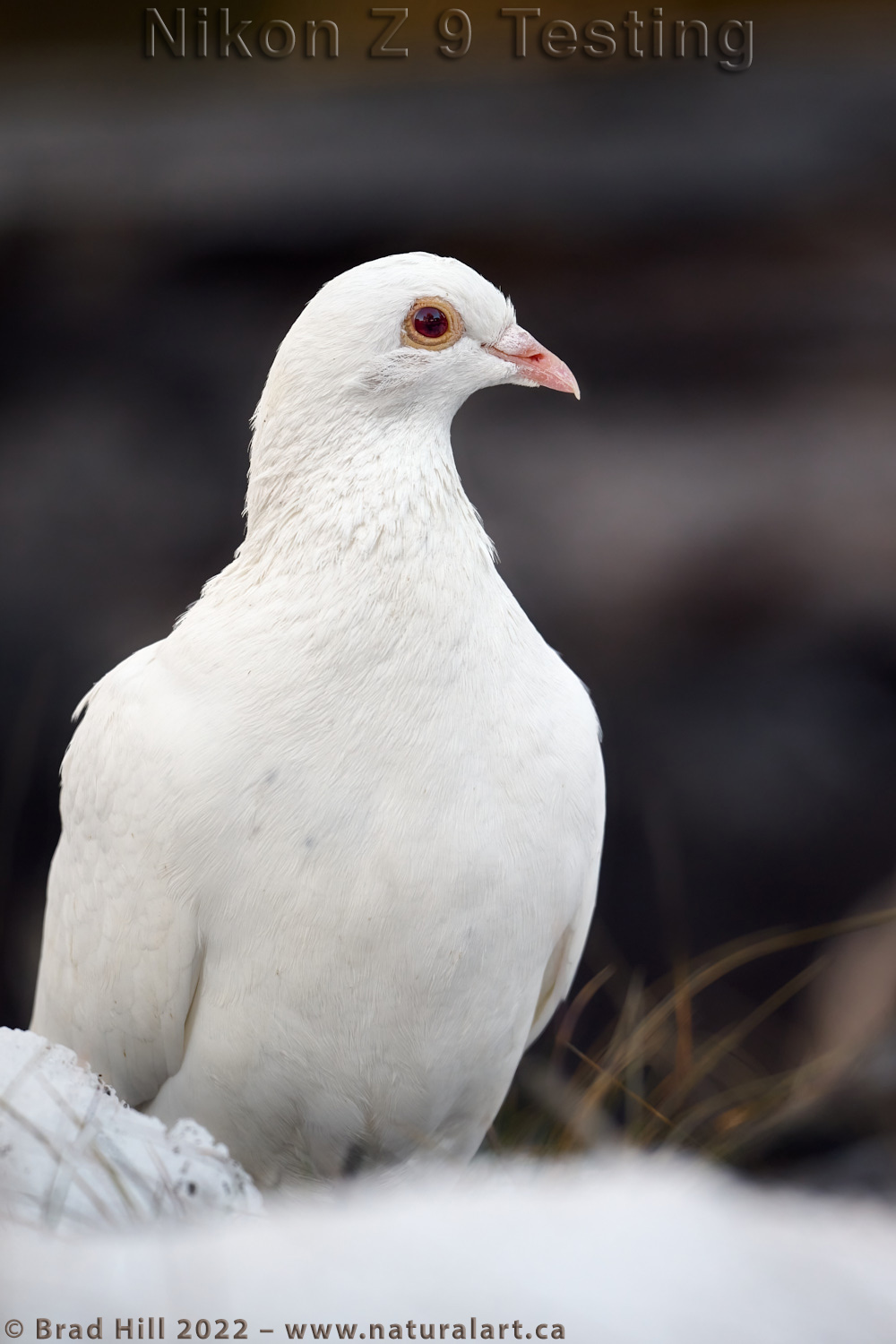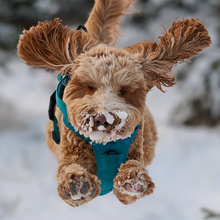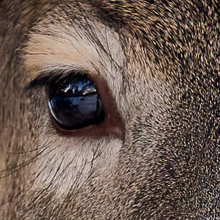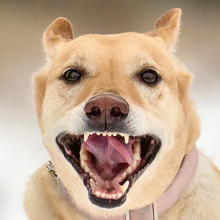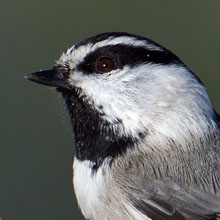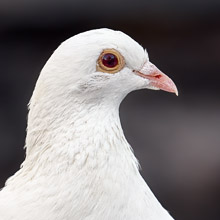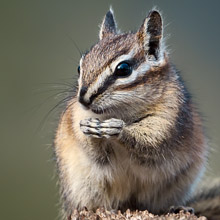Availability: Undetermined - Enquiries?
In the Field
Snow White Rock Pigeon. Findlay Creek, BC, Canada. March 16, 2022.
This is my fifth gallery post detailing my experiences with shooting wildlife using the Nikon Z 9. This unique-looking bird is a rare find, though not quite as rare as first thought when I initially misidentified it as albino Ruffed Grouse. It's actually a bird that's likely more familiar to urbanites - it's a very white Rock Pigeon (AKA for many city-dwellers - a pigeon!). In my neck of the woods (which is literally in the woods!) Rock Pigeons of any colour are exceptionally rare, and a pure white one is much rarer yet. Is this one an albino? While white (non-albino) Rock Pigeons do exist, the complete lack of pigment in any of the feathers and strongly red eyes and very pink bill and legs/feet suggest that this one is, at the very least, "albinotic" (a term I've only encountered before on the website of the Cornell Lab of Ornithology - birdsoftheworld.org). Regardless, it's a striking bird!
How did I manage to find this one? Good question. Well, while I'd like to weave a long yarn about how I had been searching for this elusive bird for decades (up and down mountains and while fording raging rivers), the boring reality is I was having a cup of coffee at sunrise in front of picture windows in our cabin on the morning of 16 March when it simply strode into sight. It was actually my partner who first spotted it...but the second I saw it I thought "Hey...that's something very unusual". I had a Z 9 sitting nearby with a Nikkor 500mm f5.6 PF on it, so I just grabbed that and a TC-14EIII teleconverter and went out to spend some quality time with the rare bird. In all I spent about 5 minutes (and just over 300 photos!) with it and was happy to leave it in peace in the exact spot I found it. I got very lucky - during those 5 minutes the sun filtered through the forest and gave me a few shots with the beautiful red eye illuminated by the sun (see the 4800 pixel images below).
So...a very lucky find. And it highlighted something interesting about the Z 9. I shot all 300+ images using 3D-tracking with subject detection turned on (in Animal mode). In the shots taken in the first few minutes I had the TC-14EIII on and the light was still low...so I was pushing the limit on how low of a shutter speed I could hold the 700mm focal length (some were shot at under 1/100s). When I went back in our cabin and examined the images and in every single shot the eye was TACK sharp. Like NO exceptions. Which is, at the end of the day, exactly what we want in a camera - one that assists us in producing a high hit rate of high-quality images, even when we're pushing the limit (in light, or in hand-holding those long lenses, or in exposure, etc.). Obviously the Z 9 is not a "perfect" camera and there are times when its AF system can be fooled - or it can take a crap image (tho' often that's more of an operator error!), but every time I go out shooting with my Z 9 I come back happier and happier.
Here's a larger version (4800 pixel) - plus two other views - of this very striking and rare pigeon. Note that at all angles (including when the bird's head was pointed directly at me and there was only a very "thin" view of the eyes) the Z 9 effectively grabbed and nicely locked onto the bird's eye(s):
• Snow White Rock Pigeon: Download 4800 pixel image (JPEG: 2.9 MB)
• Catching the Red Eye: Download 4800 pixel image (JPEG: 2.9 MB)
• You Talking to Me?: Download 4800 pixel image (JPEG: 3.6 MB)
ADDITIONAL NOTES:
1. These images - in all resolutions - are protected by copyright. I'm fine with personal uses of them (including use as desktop backgrounds or screensavers on your own computer), but unauthorized commercial use of the image is prohibited by law. Thanks in advance for respecting my copyright!
2. Like all photographs on this website, these images were captured following the strict ethical guidelines described in The Wildlife FIRST! Principles of Photographer Conduct. I encourage all wildlife photographers to always put the welfare of their subjects above the value of their photographs.
Behind the Camera
Snow White Rock Pigeon. Findlay Creek, BC, Canada. March 16, 2022.
Compressed RAW (NEF) 14-bit format; ISO 720.
Nikon Z 9 paired with Nikkor 500mm f5.6E PF. Hand-held. VR on in Normal mode. 3D-tracking AF area mode with subject recognition on (in Animal mode).
1/200s @ f5.6; no compensation from matrix-metered exposure setting.
At the Computer
Snow White Rock Pigeon. Findlay Creek, BC, Canada. March 16, 2022.
RAW Conversion to 16-bit PSD file (and JPEG files for web use), including all global and selective adjustments, using Phase One's Capture One Pro 21. Global adjustments on this image were limited to a single levels (contrast) adjustment. Selective local adjustments performed using Capture One Pro's layers and masking tools. In this case selective adjustments were made on 5 separate layers and included one or more tweaks to brightness, highlights, whites, clarity, and saturation (with most adjustments driven by the need to separate light-on-white feather detail).
Photoshop modifications were limited to the insertion of the watermark and/or text.
Conservation
Snow White Rock Pigeon. Findlay Creek, BC, Canada. March 16, 2022.
Species Status in Canada*: This species is not designated as at risk.
The Rock Pigeon (Columba livia) was introduced to North America in the early 17th century by colonists who brought domestic pigeons to the east coast settlements. Since then the Rock Pigeon has "gone feral" and lives broadly across North America. Wild Rock Pigeons are native to Europe, North Africa, and much of Asia.
While Rock Pigeons have been studied extensively (and knowledge of flight mechanics, thermoregulation, water metabolism and more was discovered through work with them), the breeding biology and population ecology of this species in the wild remains little studied and only poorly known.
The Rock Pigeon in not globally threatened, but evaluation of its conservation status and security of natural populations is hampered by confusion over the degree of interbreeding with feral domestic pigeons.
*as determined by COSEWIC: The Committee on the Status of Endangered Wildlife in Canada







